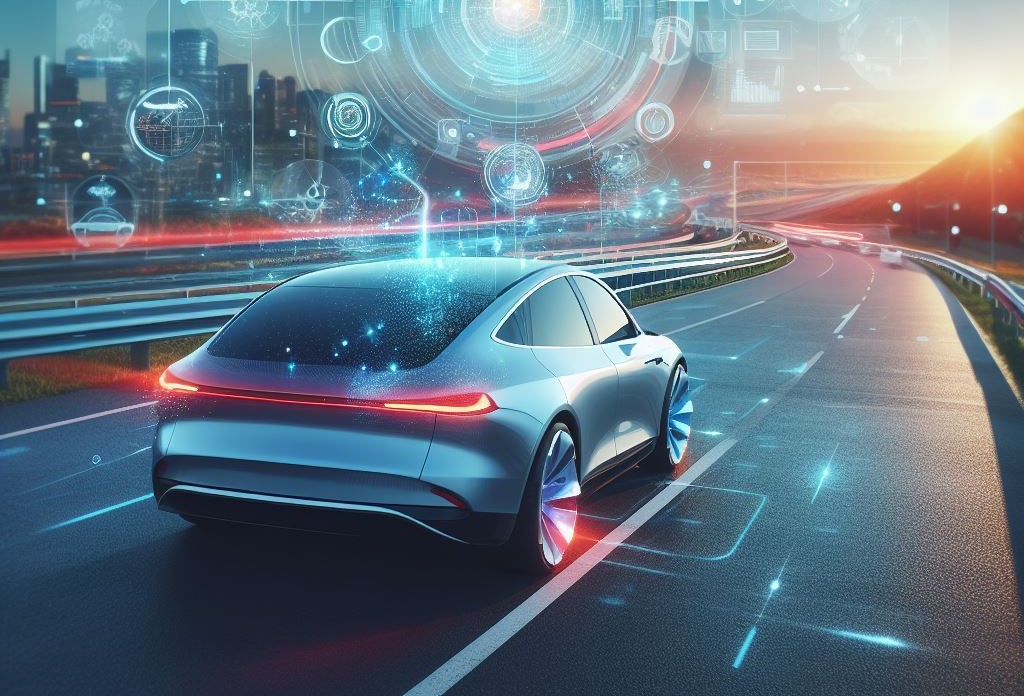GadgetWheels
Africa ready for
future-ready vehicles
There are 8 ways 5G connected smart vehicles can change the automotive experience in Africa, writes RAMI OSMAN, MediaTek’s MEA director for business development.
Vehicles are rapidly transitioning from the analogue world to digital, in the process becoming connected, data-driven devices that are woven into the Internet of Things (IoT). It’s the power of 5G networks that makes it possible, offering the high bandwidth, low latency and ubiquitous connectivity required to support a range of impressive network features.
According to one report, connected car penetration surpassed non-connected cars in 2022. Rethink Research projects that the number of cars worldwide featuring in-vehicle connectivity will triple from 279-million in 2022 to 829-million in 2030. Juniper Research, meanwhile, forecasts that enabling 5G connectivity in cars will be a $3.6-billion market by 2027.

Rami Osman, MediaTek’s MEA director for business development.
At MediaTek, for example, we have launched a range of new automotive solutions. Building on our flagship and premium smartphone chipset brand, our MediaTek Dimensity Auto range represents our expertise in performance, power efficiency and SoC integration. MediaTek is empowering smart vehicle technology innovation and is working with partners like NVIDIA to deliver automotive solutions that surpass the industry’s growing needs and demands.
In addition, MediaTek Dimensity Auto Cockpit is designed to be the world’s fastest smart cockpit, bringing MediaTek’s flagship-grade experience in Smart Home and Entertainment to vehicles, and is built using leading chip manufacturing processes to maximise feature integration, performance, and power efficiency.
With the GSMA forecasting that 4G and 5G together will account for two thirds of total mobile connections in Africa at the end of 2030, the continent will also join the connected vehicle revolution. Fully autonomous vehicles may still be years away, but car connectivity nonetheless promises to bring significant improvements in connectivity, safety, efficiency, and entertainment to the transport sector.
Here are eight ways intelligent, connected vehicles could change the automotive experience in Africa over the next decade:
- V2X communication
Connected cars will increasingly use 5G connectivity for vehicle-to-everything (V2X) communication, enabling them to communicate with other cars, road infrastructure, and even traffic management systems. This will help enhance road safety and traffic management.
- Real-time navigation
Smarter cars will benefit from enriched real-time traffic and navigation information, helping drivers to make informed decisions and avoid congested routes. They’ll also be able to offer improved positioning and navigation of vehicles in underground parking structures, tunnels and other satellite dead zones.
- Monitoring and diagnostics
Connected cars will be able to use a range of sensor data to monitor their own health and alert their owners, facilitating preventative maintenance. They’ll be able to inform the driver of components that are deteriorating before they break, for example.
- Telematics for fleet management
Connected cars are already a boon for fleet managers, enabling them to manage their vehicle fleets more efficiently, tracking locations, monitoring fuel consumption, and optimising routes. 5G will enhance mapping capabilities and deliver precise geospatial data, taking these capabilities to the next level.
- In-car entertainment
5G supports high-quality streaming of music, videos, and other content to enhance the in-car entertainment experience for passengers.
- Enhanced driver assistance systems
5G can support advanced driver assistance systems features, such as adaptive cruise control, pre-collision warning, automatic emergency braking, pedestrian detection and lane-keeping assistance to make the roads safer for everyone.
- Augmented reality cockpits
Cars in future may use cameras, augmented reality overlays and artificial intelligence (AI) to display information about terrain, upcoming hazards, available parking and points of interest in a cockpit-like environment. This will help drivers to navigate and drive more safely and efficiently.
- Emergency services and roadside assistance
5G can enable faster communication during emergencies, helping vehicles in distress connect with emergency services and roadside assistance more effectively. Cars may even be able to send a wealth of data about the situation, so that emergency services can arrive on the scene well prepared.
These advanced services are just the first steps towards a world of fully autonomous vehicles. Under the hood, advanced chipsets will enable the fast connectivity and advanced AI features that will make the car of the future so much smarter. According to Gartner, the total addressable market for infotainment and instrument cluster systems-on-chip (SoCs) used within vehicles will reach $12-billion in 2023.



















